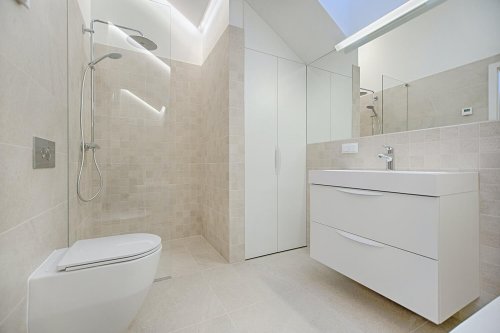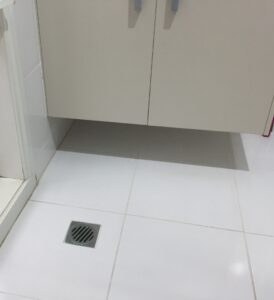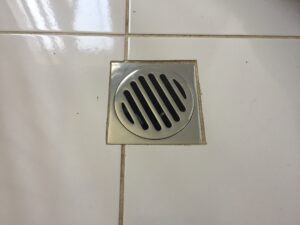A common comment by Singaporean visitors to my home is that I have drainage holes installed in the floor of my bathrooms and kitchen. This is an uncommon feature of Australian houses. You may find them in showers but not the rest of the bathroom and certainly not the kitchen.
Most Australian perform ‘dry cleaning’ of their bathrooms which means vacuuming, mopping and wiping all surfaces including the toilet seats and sinks with chemicals and special wipes. This is in sharp contrast with our Singaporean habit of splashing soapy water on every single surface on our bathrooms!
Building Regulations Relating to Floor Wastes
There are two primary documents in relation to wet areas construction:
- Building Code of Australia (BCA)
- AS 3740 – 2010 Waterproofing of domestic wet areas
What to Look Out For When Building a Floor Waste
Wrong location: As this is an uncommon feature, you can almost expect that you will encounter issues with the installation of this in your home. My own experience was that the builder did not install it under the vanity. It is inconveniently located right where I stand in front of the vanity. By the time I realised this, it was too late to remedy this as the concrete slab had been poured. So my simple solution is to place a floor mat over it. Whenever I do a wet clean of the bathroom, the floor mat can easily be removed without affecting the utility of the trap.
Wall tap: Some builders will insist that a wall tap needs to be installed. My builder certainly did. While it is ugly and unsightly, I was grateful that it was installed for 2 reasons:
- It’s easier to fill a bucket with the wall tap compared to using the shower hose.
- It’s easier to attach a garden hose to the wall tap and rinse the floor with it instead of using the shower hose which may be too short for this purpose.
Lack of fall: Bathroom and kitchen floors here tend to be level with the rest of the house without a slant (or fall) towards the drainage hole. Also, the hole is flush flat with the rest of the floor to avoid trip hazards. Therefore, it is tricky to drain the floor and you will need to mop the excess water towards the drainage hole as water will not flow towards it due to the floor being practically horizontal/level.
Skirting material: Some builders install timber skirting in bathrooms/kitchens instead of tiled skirting. It’s worth upgrading to tiled skirting if your builder provides this option. Otherwise, you may risk water damage to timber skirting if you like to wet wash your bathroom/kitchen regularly.








